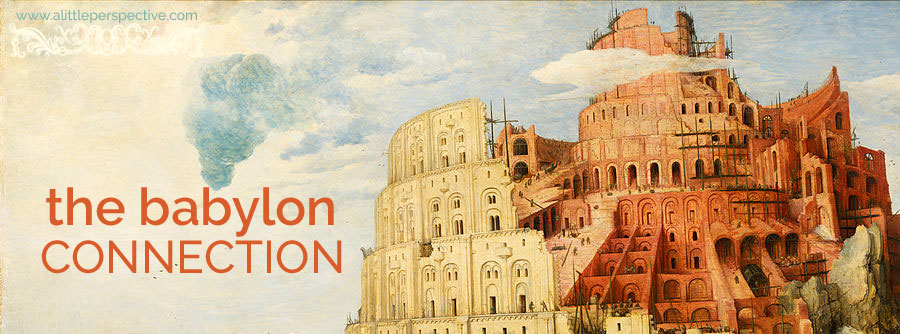the babylon connection
the babylon connection, part two
the babylon connection, part three
the babylon connection, part four
So far we have seen that a rebellion against God was first mounted at Babylon, for He had commanded the people to spread abroad in the earth and fill it, and that Nimrod rather, by building the Tower of Babel, attempted to keep the people together in Shinar as subjects in his own kingdom. But how do we know that paganism had its beginning there, and that Nimrod was the inventor of it?
Now we have to pick up the threads left to us by ancient historians. I started learning about this from modern writers quoting the Greek, Phoenician, and Chaldean historians, and so that is how I will present it here.
From Jones’ Dictionary of Old Testament Proper Names (1856):
“He [Nimrod] is styled by Berosus [an ancient Chaldean historian famous for his accuracy] one of the Cushdim [descendants of Cush] or Chaldeans. Not being content to exercise a tyrannical dominion over those who had revolted from God to his rule, he commenced a war against the Shemites, and drove Asshur out of his dominions. … But ungodly ambition seldom stops at one sin; so this presumptuious king, having set at naught the laws of man, defies those of God. Hence he attempted to found a universal religion–the worship of fire; for the author of the Paschal Chronicle [an ancient Greek history] says, “He taught the Assyrians to worship the fire;” … the Patriarchal religion was first authoritatively corrupted at Babylon by this postdiluvian apostate … Because of this sin, the king of Babylon was called “Nimrod,” [meaning ‘a rebel,’ or ‘to be rebellious’ in Hebrew] and the city where he reigned, “Babylon the great, the mother of harlots and abominations of the earth.” After his death he was deified by the Babylonians, and worshiped under the name of Bel, or Baal. He was also worshiped under the title of Orion; and in fact, the constellation is only known in Arabic astronomy to the present day as El Jabbar, or “The Giant,” the especial epithet of Nimrod.”
the babylon connection, part six
the babylon connection, part seven
the babylon connection, part eight
the babylon connection, part nine
the babylon connection, part ten
the babylon connection, part eleven
the babylon connection, part twelve
the babylon connection, part thirteen
the babylon connection, part fourteen
the babylon connection, part fifteen
the babylon connection, part sixteen

3 thoughts on “the babylon connection, part five”
I just wanted to tell you that I received our purchased copy of The Story of the Ancient World. It is just beautiful! You did a lovely lovely job and it was worth the wait!
Warmly,
Kate
So so pleased you like it, Kate, and so glad to hear it was worth the wait!
Christine,
I'm glad that you are able to continue with your Babylon connection blog again, it's been a fascinating read into the beginnings of paganism. Thank you for your careful research. I've been printing them out for my parents to read as well.
I received the Story of the Ancient World today and have enjoyed looking at it this afternoon. Thank you for your efforts in publishing this-it will be a big help in homeschooling my dd's.
Blessings to you!
Diane